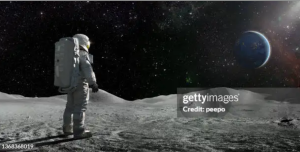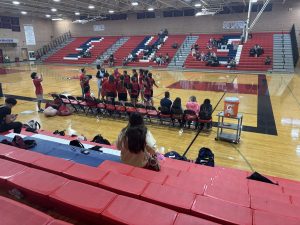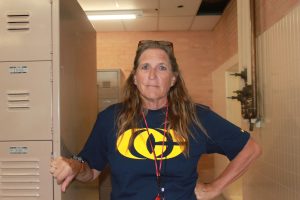Math and Sciences Classes You can Take for 2019-2020

January 17, 2019
Registration is right around the corner and if you are deciding what math or science class to choose, read on.
Math:
(Freshman) Algebra:
This class will guide you through expressions, systems of equations, functions, real numbers, inequalities, exponents, polynomials, radical and rational expressions.
(Sophomore or Freshman) Geometry or Honors:
This course has you learn points, lines, planes, angles, parallel lines, triangles, similarity, trigonometry, quadrilaterals, transformations, circles and area.
(Sophomore or Junior) Algebra 2 or Honors:
This is the third math course in high school and you learn linear equations, inequalities, graphs, matrices, polynomials and radical expressions, quadratic equations, functions, exponential and logarithmic expressions, sequences and series, probability and trigonometry.
“I think it’s much easier than geometry and the material is easier to grasp because of having basic algebra already down. It is more of a continuation,” Emma Watson, junior, stated.
Financial Math (Senior):
Finance is a class where students learn the type of math that you would use in your everyday life, such as using credit cards, filing taxes, and how to save and spend money wisely.
“You should sign up to learn how to spend your money,” stated senior, Logan Bedell.
Statistics or AP Statistics (Seniors):
Calculus is the mathematical study of change, in the same way that geometry is the study of shape and algebra is the study of operations and their application to solving equations.
College Algebra (seniors):
This course is a modern introduction to the nature of mathematics as a logical system. It covers algebraic topics: algebraic expression, functions, and theory of equations. You can also take the class for a college credit.
“The class can be frustrating at times, but the hard work pays off,” Samantha Spaeth, senior, reported.
Pre-Calculus or AP Calculus (seniors):
Precalculus is a course that includes algebra and trigonometry at a level which is designed to prepare students for the study of calculus. AP Calculus consists of a full high school academic year of work that is comparable to calculus courses in colleges and universities.
Science:
STEM students (freshman):
STEM stands for science, technology, engineering, and math. STEM curriculum blends those subjects in order to teach “21st-century skills,” or tools students need to have if they wish to succeed in the workplace of the “future.”
Biology (sophomore or freshman):
You learn about the study of life at many scales, from cells to organisms to entire ecosystems.
Chemistry (sophomore):
It is the study of matter and the interactions between matter with other matter or with energy.
AP Environment (juniors):
AP Environmental Science course is to provide you with the scientific principles, concepts, and methodologies required to understand the interrelationships of the natural world, to identify and analyze environmental problems both natural and human-made.
AP Physics (juniors or seniors):
This is an algebra-based, introductory, college-level physics course. It explores Newtonian mechanics (including rotational motion), work, energy, power, mechanical waves and sound, and circuits – in other words, fundamental physics concepts.
AP Biology (juniors or seniors):
You explore the following topics: evolution, cellular processes—energy and communication, genetics, information transfer, ecology, and interactions.
AP Chemistry (juniors or seniors):
This is a course and examination offered by the College Board as a part of the Advanced Placement Program to give American and Canadian high school students the opportunity to demonstrate their abilities and earn college-level credit.
“I think it is a good class. Carroll is a really good teacher and the demonstrations are really good this year,” reported Alyssa Urff, junior.
Physics (juniors or seniors):
Motion, waves and sound, electricity and magnetism, and optics and some basic calculations that go along with them using either algebra or calculus depending on your choice of class.
Earth and Space (junior or senior):
The four basic areas of Earth science study are: geology, meteorology, oceanography, and astronomy.
Human Anatomy (senior only class):
Human anatomy deals with anatomical structures of the human body, including cells, tissues, organs, and organ systems.
“Kids should sign up if they have any interest in their body or if they want to go into the medical field; nursing, doctor, etc,” stated Mrs. Trujillo, one of the Anatomy teachers.











